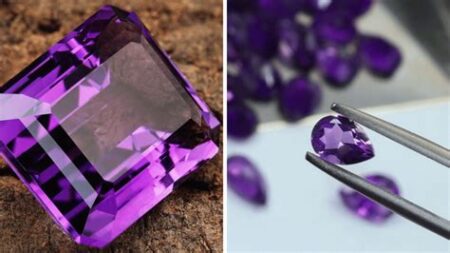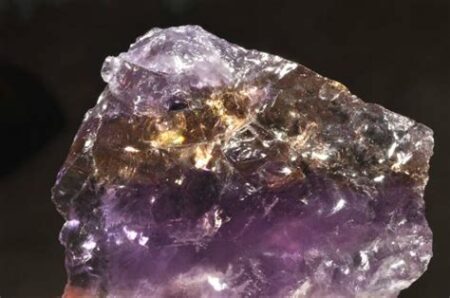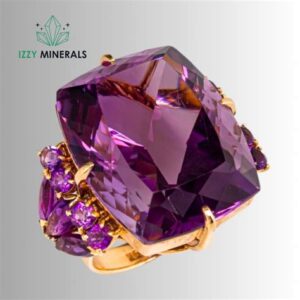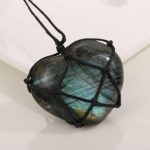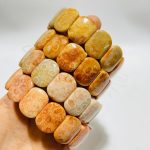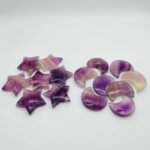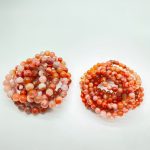Imagine embarking on a nocturnal adventure where rocks come alive, their surfaces glowing with a captivating symphony of colors under the influence of ultraviolet light. Welcome to the enthralling realm of ultraviolet reactive rocks, a captivating phenomenon that has captivated scientists, collectors, and nature enthusiasts alike.
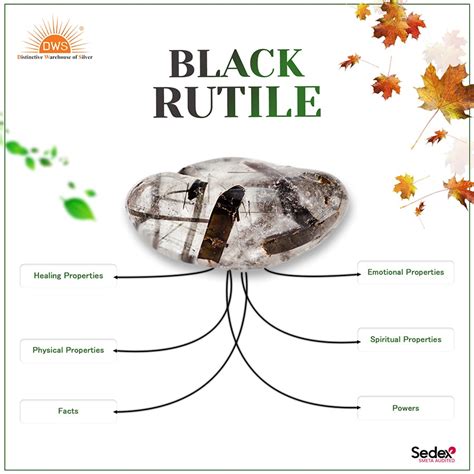
The Science Behind UV Fluorescence
Ultraviolet (UV) fluorescence occurs when certain materials absorb ultraviolet light and then re-emit it at a longer wavelength, typically in the visible spectrum. This process results in the emission of vibrant colors that are distinct from the rock’s natural appearance under ordinary light.
Minerals and rocks that exhibit ultraviolet fluorescence contain elements such as calcium, manganese, tungsten, and uranium. When these elements are arranged in specific crystalline structures, they can absorb and emit UV light, creating a dazzling display of colors.
Discovering UV Reactive Rocks
UV reactive rocks can be found in various geological environments, including mines, quarries, and mountain outcrops. They are often associated with hydrothermal deposits, where mineral-rich fluids have interacted with the surrounding rocks. Some common examples of UV reactive rocks include:
- Calcite (orange-red)
- Fluorite (blue-green)
- Scheelite (yellow-white)
- Uraninite (green-yellow)
- Willemite (green)
Applications of UV Reactive Rocks
Beyond their intrinsic beauty, UV reactive rocks have numerous practical applications in various fields:
1. Mineral Identification and Geochemistry
UV fluorescence can aid in identifying specific minerals and understanding their geological history. By analyzing the colors and intensity of fluorescence, geologists can infer the mineral’s composition, origin, and environmental conditions during its formation.
2. Medical and Industrial Uses
Scheelite and other tungsten-bearing minerals are essential in the production of medical diagnostic equipment, X-ray machines, and industrial materials. Their UV fluorescence properties allow for their easy and efficient detection in various applications.
3. Art and Decorative Objects
UV reactive rocks are highly sought after by collectors, artists, and designers who use them to create stunning sculptures, jewelry, and home décor. Their ability to glow under UV light adds an ethereal dimension to these objects.
4. Architectural Lighting
The colors emitted by UV reactive rocks can be harnessed for unique and captivating architectural lighting effects. By incorporating these rocks into walls, ceilings, and fixtures, architects can create dynamic spaces that come alive under UV light.
5. Entertainment and Experiential Design
UV reactive rocks play a vital role in creating immersive and engaging experiences in museums, theme parks, and nocturnal environments. They can be used to enhance displays, create interactive exhibits, and provide mesmerizing lighting effects.
Consumer Motivations and Pain Points
Consumers who are drawn to UV reactive rocks are often motivated by a variety of factors, including:
-
Curiosity and Fascination: The natural beauty and scientific wonder of UV fluorescence captivate many people, inspiring them to seek out and collect these remarkable rocks.
-
Aesthetic Appeal: The vibrant colors emitted by UV reactive rocks add a touch of magic and enchantment to any space. They are highly sought after by collectors and homeowners alike for their decorative value.
-
Educational Value: Understanding the science behind UV fluorescence can spark a passion for geology and inspire young minds. Educational institutions use UV reactive rocks to enhance science lessons and foster scientific curiosity.
-
Pain Points: Certain types of UV reactive rocks can be fragile and susceptible to damage. Collectors must take proper care to preserve the integrity of their specimens.
Step-by-Step Approach to Collecting UV Reactive Rocks
1. Learn about UV Fluorescence: Familiarize yourself with the principles of UV fluorescence and the types of rocks that exhibit this phenomenon.
2. Acquire a UV Lamp: Purchase a UV lamp with a wavelength suitable for exciting fluorescence in rocks.
3. Explore Geological Sites: Visit mines, quarries, and outcrops where UV reactive rocks are known to occur.
4. Search for Fluorescence: Shine your UV lamp on rocks and observe if they emit any colors. Use a magnifying glass to examine surfaces closely.
5. Identify the Minerals: Compare the colors emitted by the rocks to known mineral fluorescence characteristics. Refer to field guides or consult with experts for accurate identification.
Emerging Applications and Future Innovations
The field of UV reactive rocks is constantly evolving. Researchers and innovators are continually exploring new applications and developing creative ways to harness their unique properties:
1. Biomineralization and Nanomaterials: UV fluorescence is used to study the formation and properties of biominerals, which could lead to advancements in materials science and medicine.
2. Environmental Monitoring: UV reactive rocks can be used to detect and monitor pollutants in water and soil, providing valuable insights for environmental protection.
3. Art and Design: The use of UV reactive rocks in art and design is expanding rapidly, inspiring new forms of artistic expression and interactive installations.
Conclusion
UV reactive rocks represent a captivating realm where science, beauty, and practical applications intertwine. Their ability to emit vibrant colors under UV light has ignited the imagination of geologists, collectors, artists, and scientists alike. As the field continues to evolve, we can expect even more innovative and exciting applications of these remarkable natural wonders. Embrace the enchanting world of UV reactive rocks and let their colors inspire your creativity, curiosity, and scientific exploration.

